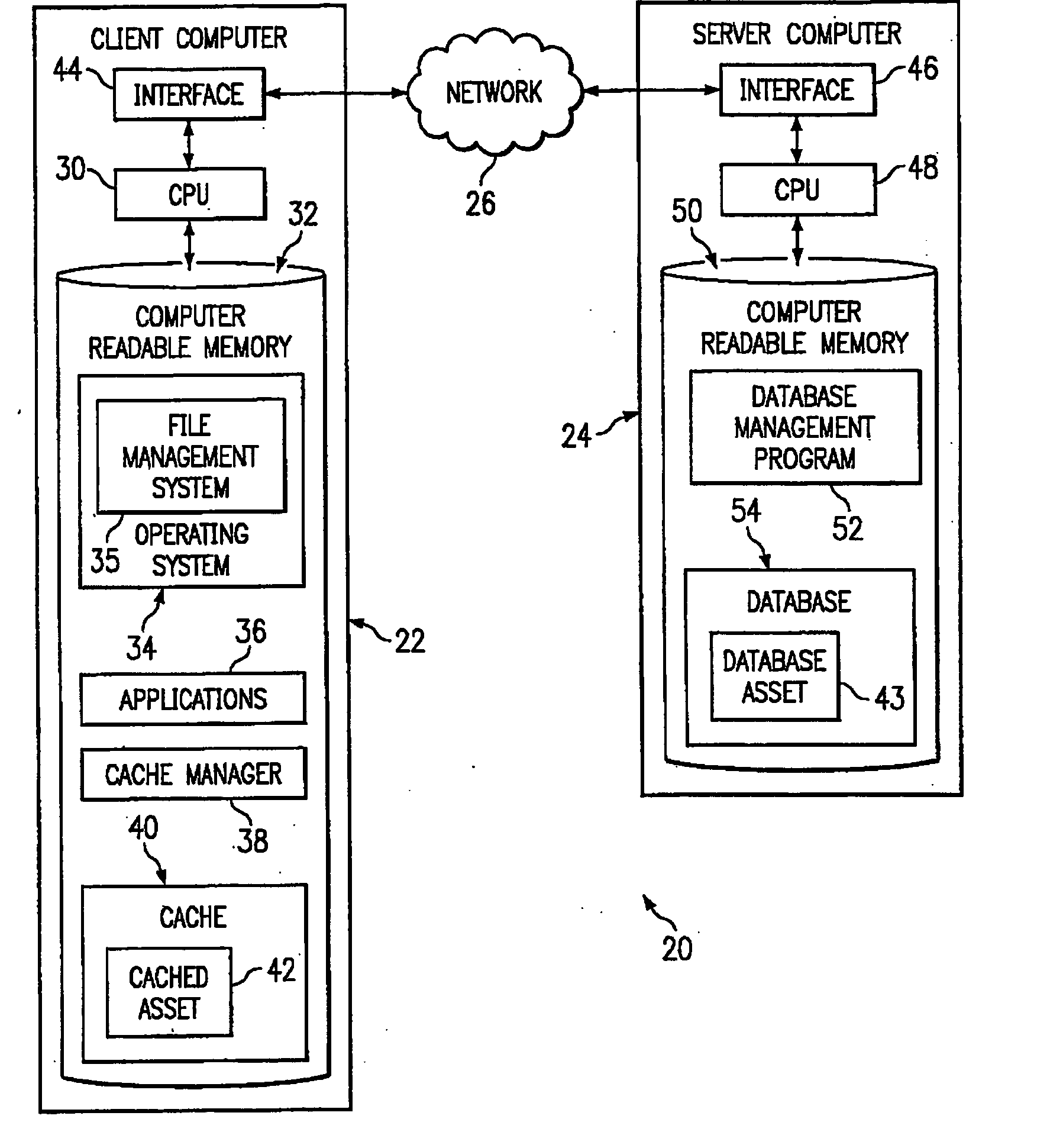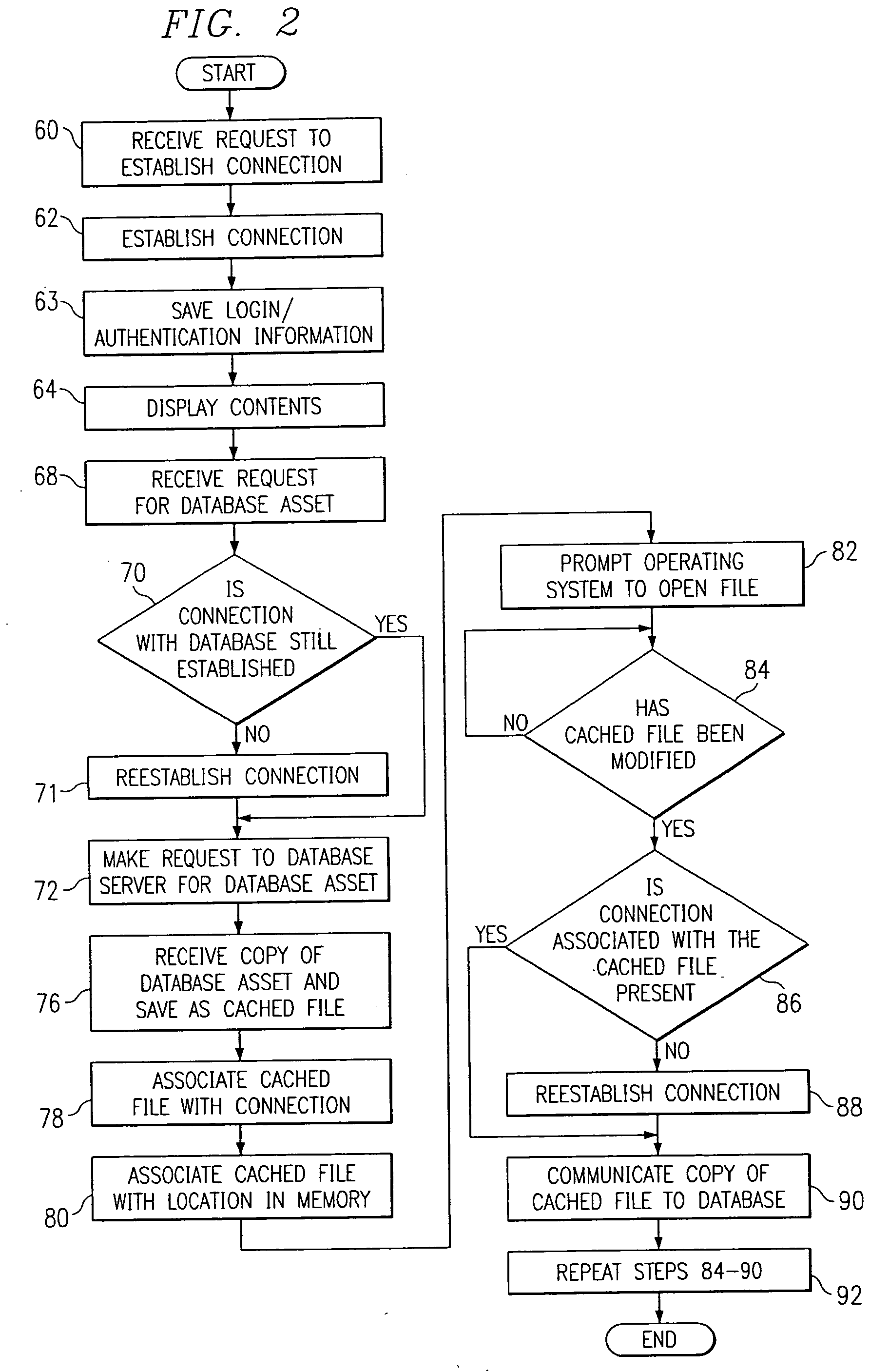System and method for the synchronization of a file in a cache
a file and cache technology, applied in the field of cache management, can solve the problems of reducing the likelihood that a file will be lost or corrupted, unattractive systems, and databases that also present many challenges to organizations, and achieve the effects of reducing latency, reducing latency, and saving substantial tim
- Summary
- Abstract
- Description
- Claims
- Application Information
AI Technical Summary
Benefits of technology
Problems solved by technology
Method used
Image
Examples
Embodiment Construction
[0022] Preferred embodiments of the present invention are illustrated in the FIGUREs, like numerals being used to refer to like and corresponding parts of the various drawings.
[0023] The embodiments of the method and system of the present invention provide the capability to seamlessly and transparently access database files locally and synchronize cached files with a database. Embodiments of the present invention provide the ability to save a database asset as a local cached file, determine if the cached filed has been accessed or modified, and if the cached file has been accessed or modified, synchronize the cached file and the associated database (e.g., the database from which the database asset was received). Additionally, the embodiments of the present invention can also provide the ability to open, view, and / or modify database assets via a user's preferred application or software tool.
[0024]FIG. 1 illustrates a system 20 that can include a client computer 22 utilizing a cache...
PUM
 Login to View More
Login to View More Abstract
Description
Claims
Application Information
 Login to View More
Login to View More - R&D
- Intellectual Property
- Life Sciences
- Materials
- Tech Scout
- Unparalleled Data Quality
- Higher Quality Content
- 60% Fewer Hallucinations
Browse by: Latest US Patents, China's latest patents, Technical Efficacy Thesaurus, Application Domain, Technology Topic, Popular Technical Reports.
© 2025 PatSnap. All rights reserved.Legal|Privacy policy|Modern Slavery Act Transparency Statement|Sitemap|About US| Contact US: help@patsnap.com



